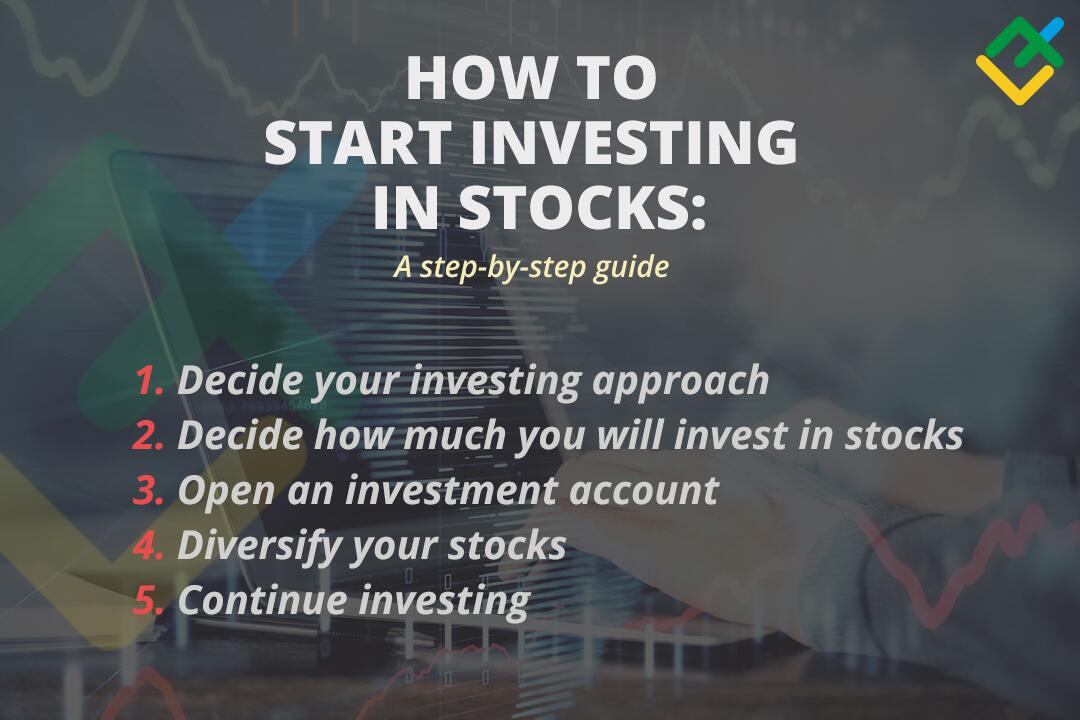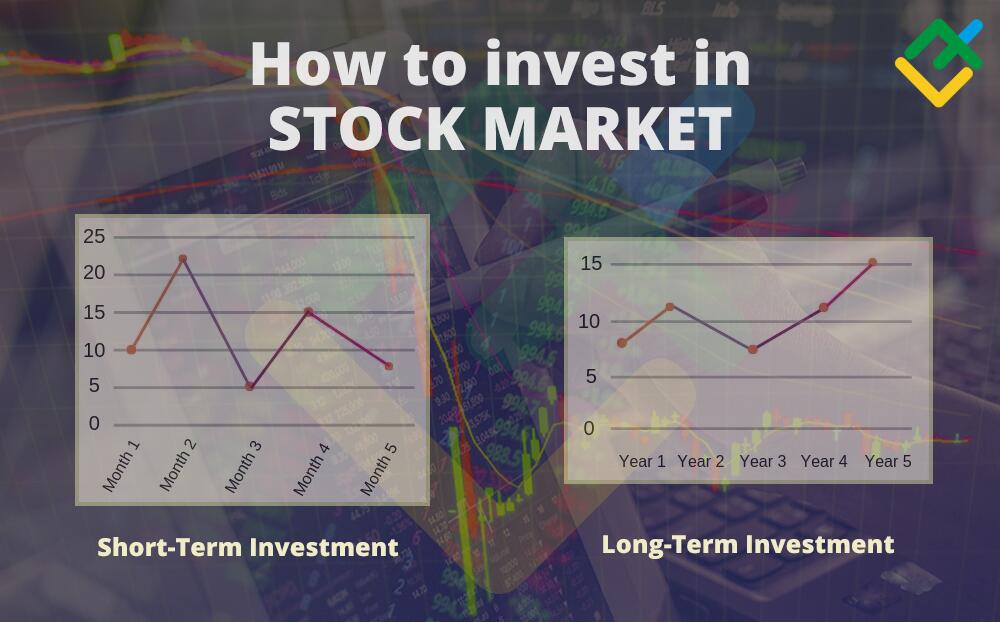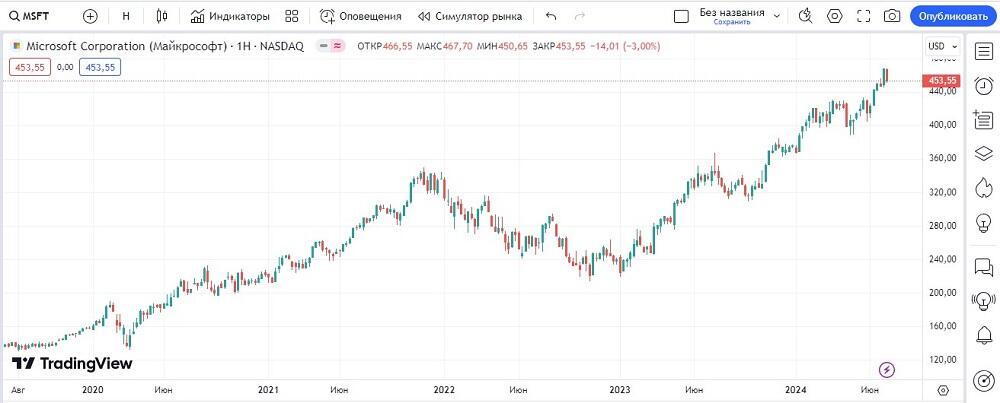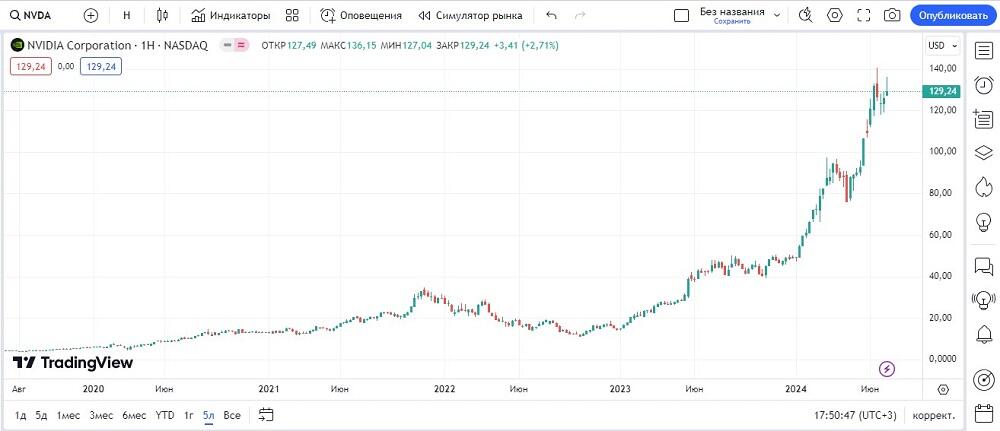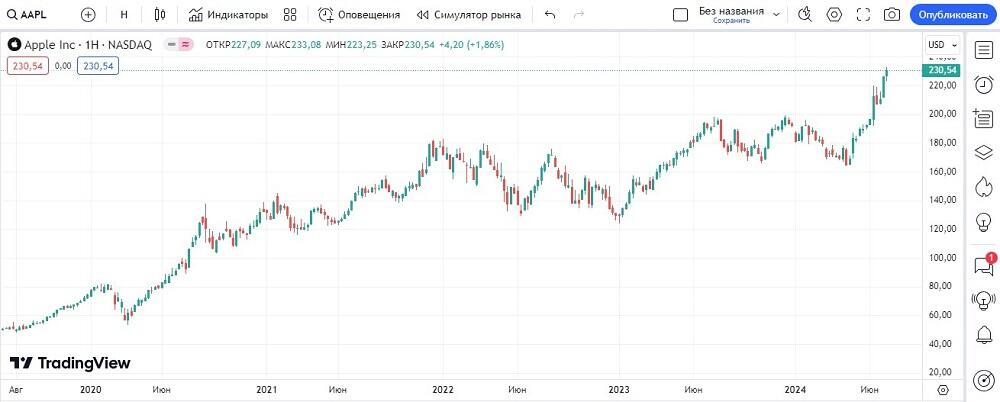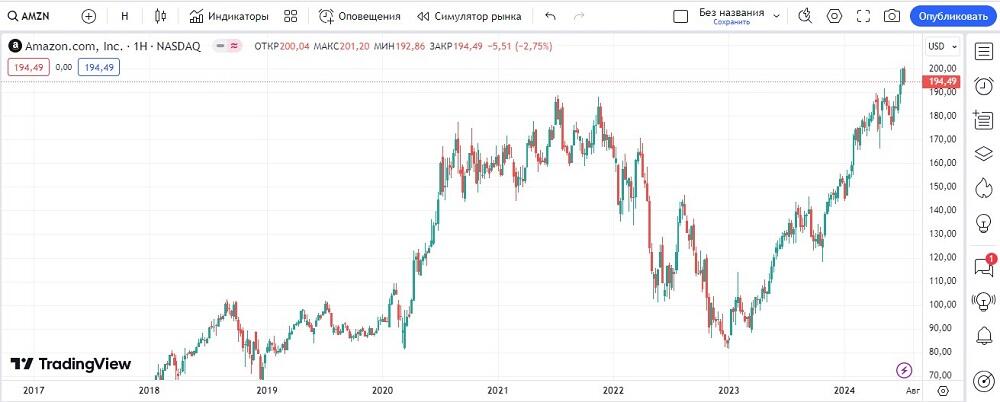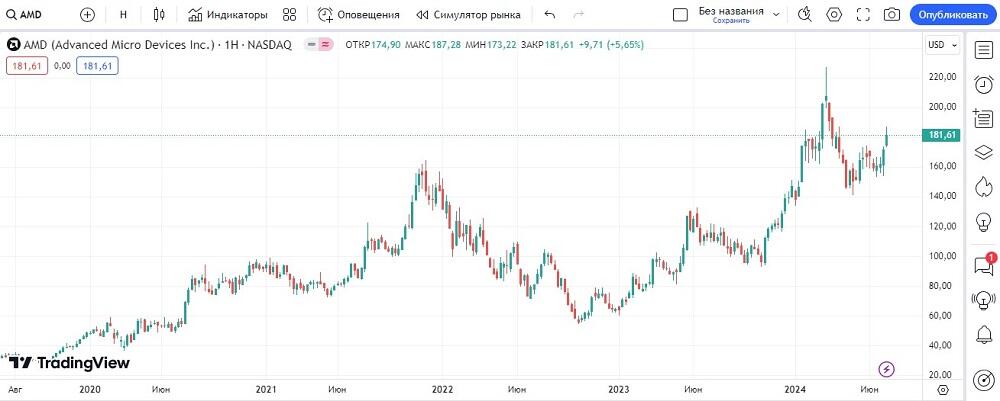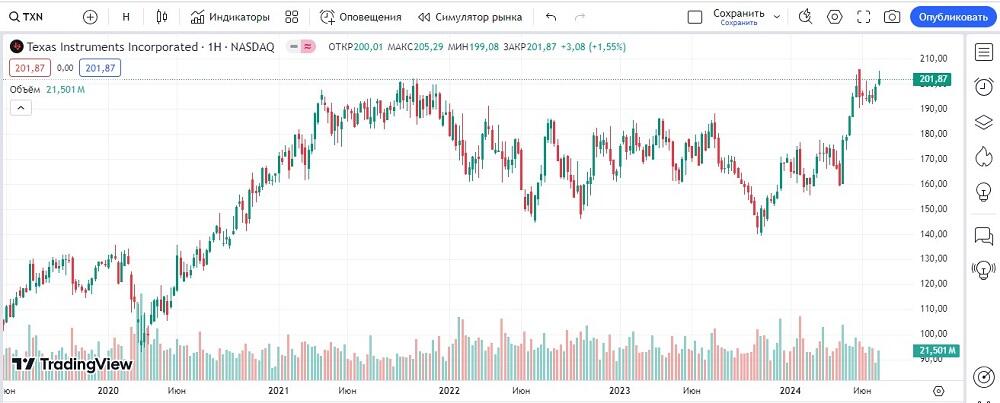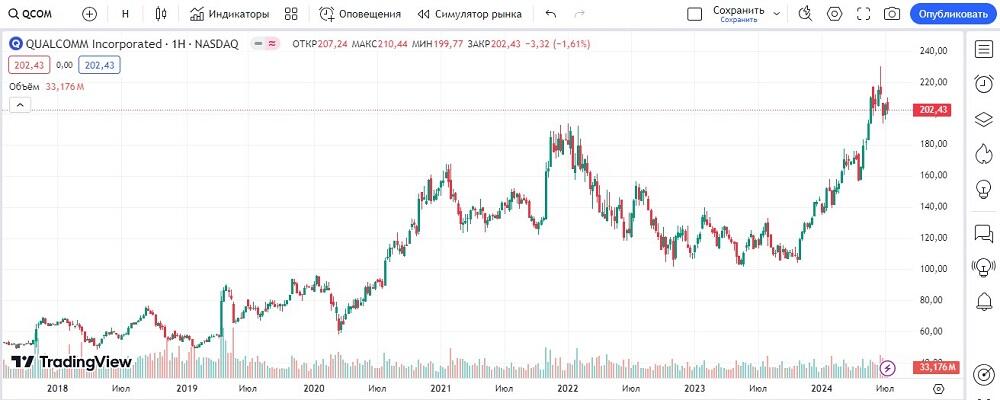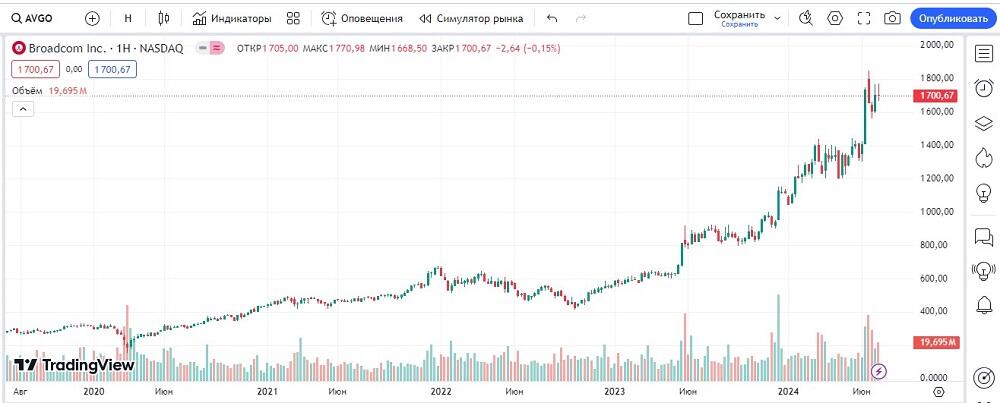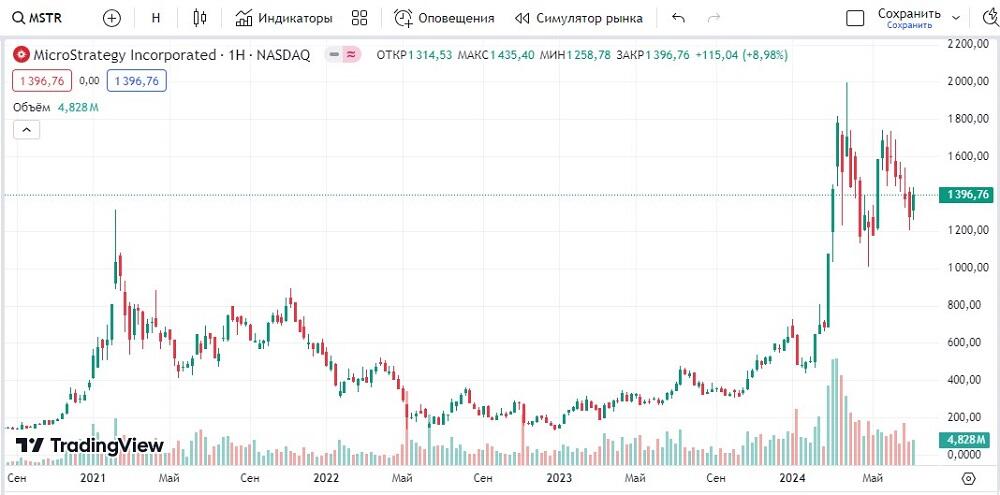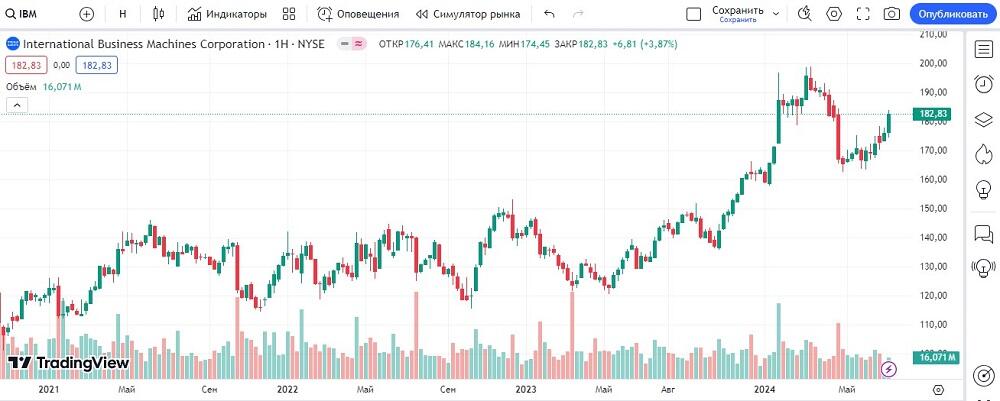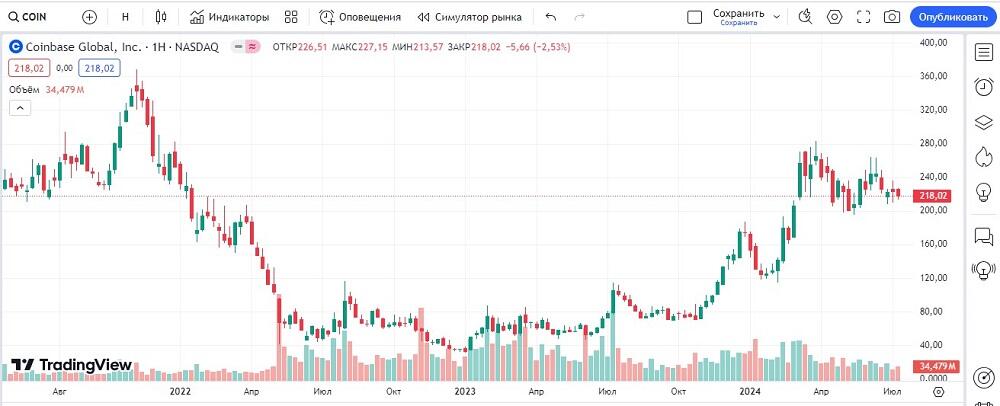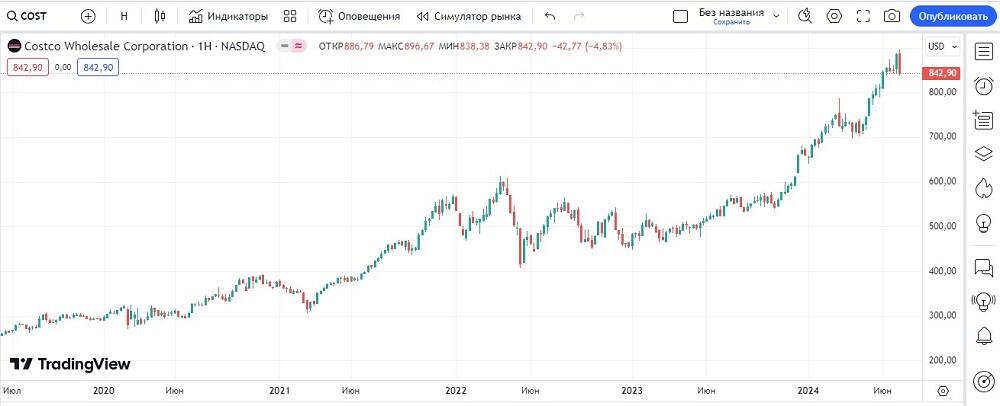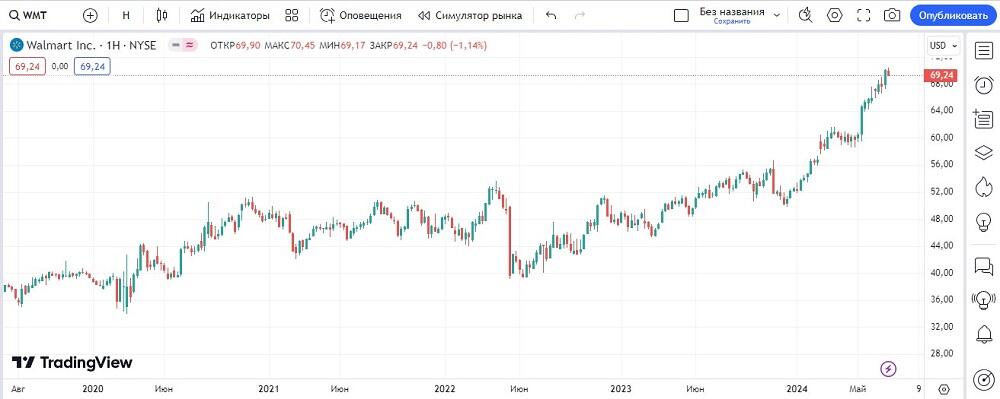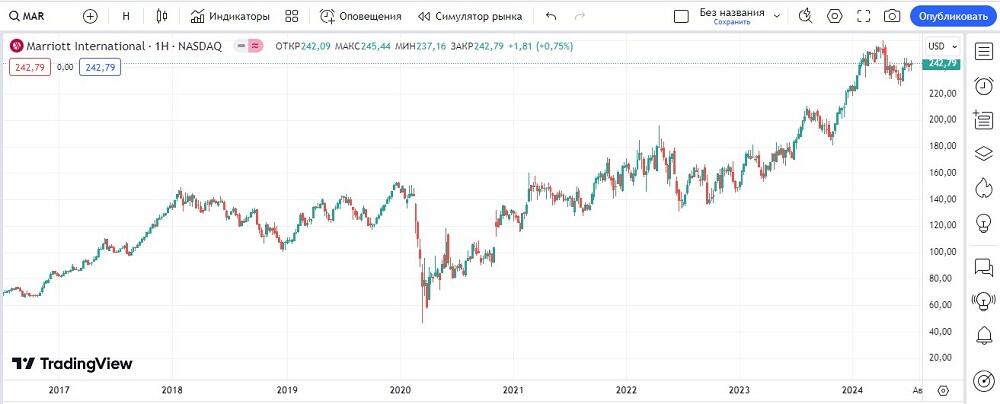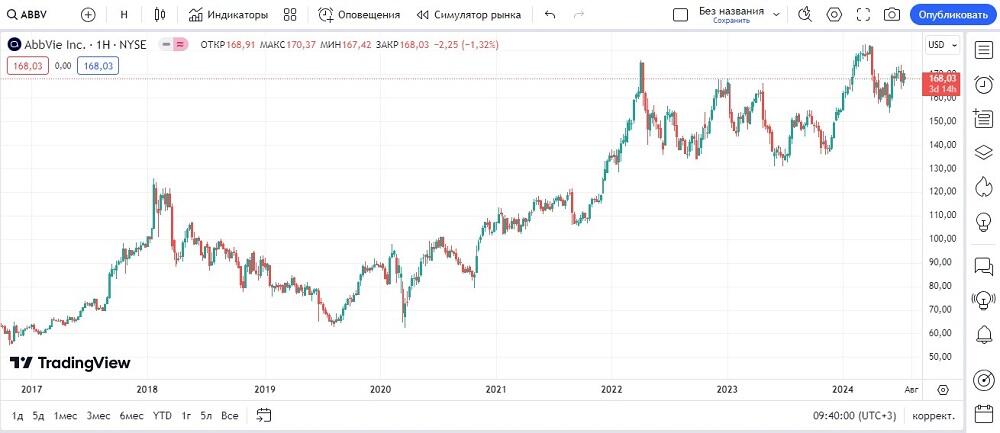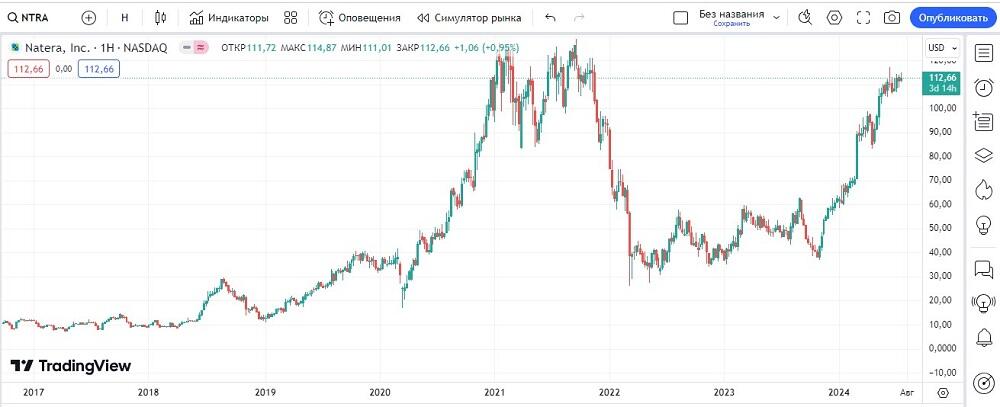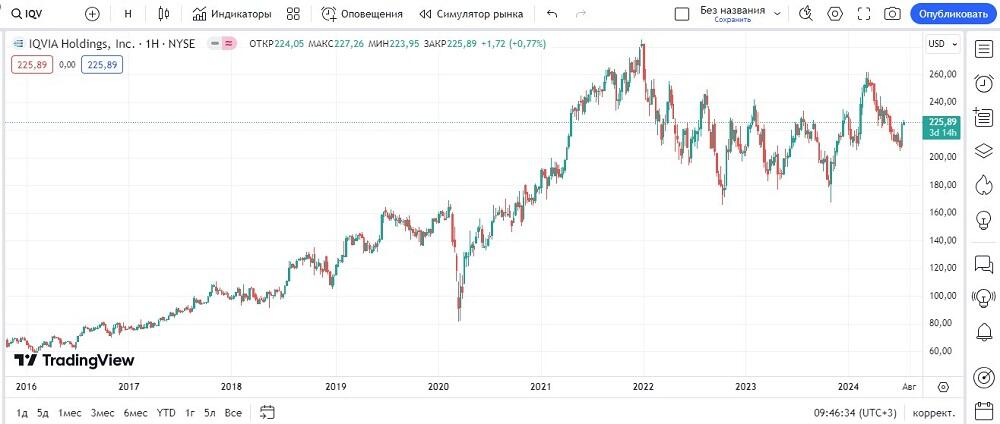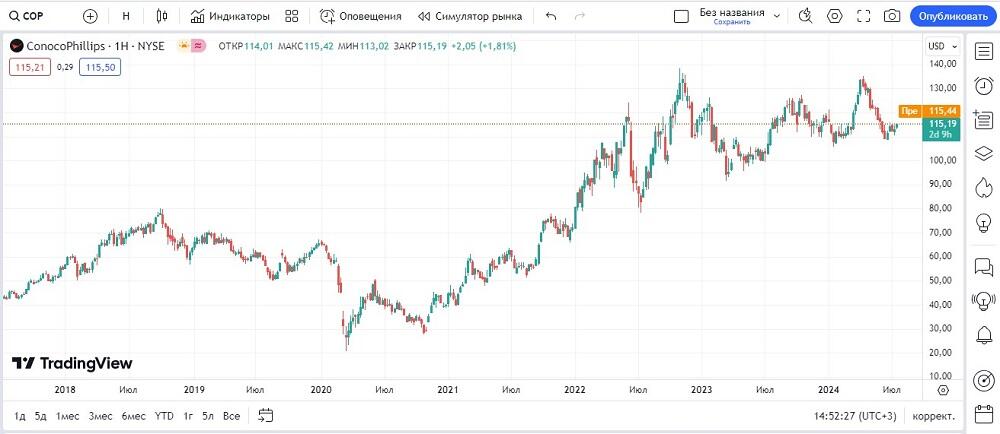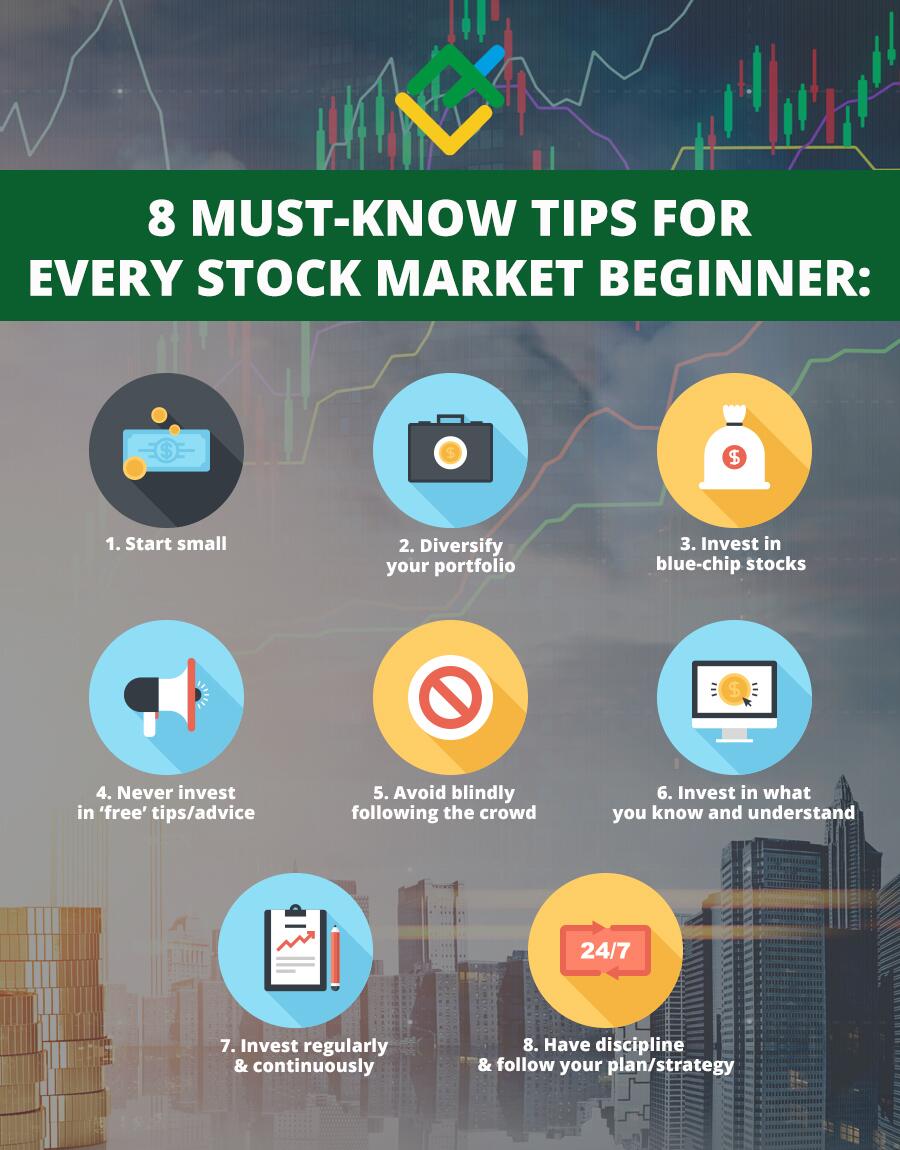
During the pandemic, many people were left without a stable income. Without any income, to be honest. Those who used to work 9 to 5 in their offices were made to work from home. How to earn via the Internet – that is what millions of people now want to find out. Investing in stocks is a way that seems to be simple and requires no university education. Moreover, knowing how to invest in stocks for beginners with little money can become a real-life savior. Everybody can do that, right?
Let’s find out what basic knowledge, investments, and skills you require to start making your living by investing in stocks and how much you can earn.
The article covers the following subjects:
Major takeaways
| Main Thesis | Insights and Key Points |
|---|---|
| Basics: | Investing in stocks online offers opportunities even during uncertain times like pandemics. |
| Tools: | Online brokers, robo-advisors, and employer-based platforms facilitate stock investments. |
| Types of Investments: | Options include individual stocks, index funds, mutual funds, ETFs, and CFDs. |
| Strategies: | Choose between active vs. passive and short-term vs. long-term investment approaches. |
| Financial Planning: | Budgeting, understanding financial goals, and risk management are crucial. |
| Importance of Research: | Research is vital for stock selection, understanding market trends, and risk mitigation. |
| Portfolio Management: | Diversify investments, monitor stock performance, and adjust strategies as needed. |
Investing in Stocks: 5-Step Guide
Of course, it’s impossible to fit in the art of investing in stocks in 5 short steps. However, following these pieces of advice, you will be able to make fewer mistakes while getting used to working with stocks. Prepare yourself for losses – without them, no learning can be done. However, if you keep on exploring trading opportunities, make efforts, and discipline yourself, you will be able to go the long road from a beginner to an experienced investor with high-yield shares.
Step 1: Decide How You Want to Invest in Stocks
What You Can Invest In
-
Individual stocks. To invest in individual stocks means to buy a company’s shares. The reasons for a company to go public with their shares may be different – they may want to raise the capital to start, expand, or grow the company. You can make money through stocks in two different ways. One way is through the price appreciation of the stock. The other way is to make money through dividends, which are the profits of the company paid to the shareholders.
-
Index funds. This is another popular investment mechanism that tracks a market index. An index fund is a type of mutual fund or exchange-traded fund (ETF) with a portfolio constructed to match or track the components of a financial market index, such as the Standard & Poor’s 500 Index (S&P 500). An index mutual fund is said to provide broad market exposure, low operating expenses, and low portfolio turnover.
-
Mutual fund. This fund represents a company that takes money from numerous investors, puts it in stocks, and uses it as short-term debt. Shares in mutual funds can be bought. If you have a share, you have a part of ownership in this fund; therefore, you have a right to possess the income the company gets.
-
ETFs. It stands for the exchange-traded fund and is a type of security. It is connected with an index, sector, commodity, or another asset. You may buy and sell it on a stock exchange just as if it was a usual stock. ETFs may consist of different types of investments, including stocks.
-
Stock CFD. CFD stands for contract for difference. It is an investment product you buy and sell that tracks the performance of an underlying security. СFDs are used for trading. They don’t allow you to own stocks, but you can trade on the rise and fall of their price. Trading is considered to be the easiest way. It fits perfectly for beginners – even if you have only $100, you can dive in.
-
Index CFD. Indices measure the price performance of several (mostly the largest ones) shares traded on one exchange. FTSE 100, S&P 500, and DJIA are among the most popular indices. Trading indices, you get exposure to an entire economy or sector at once.
What You Can Use to Invest
1. Online brokers. There are two types of brokers – full-service and discount. If you choose a full-service broker, you will be provided with a wide range of services – for example, financial advice for retirement, healthcare, and financial consultations. The services take significant fees along with a certain percentage of your transactions and assets.
Discount brokers’ services are on the rise right now. Certain fees are also charged, but there is no restriction about the minimum of transactions. You may also use so-called robo-advisors – this is a hands-off approach; an algorithm makes investment decisions for you, including tax-loss harvesting and rebalancing.
2. Through your employer. This option is quite rare. You have a chance to make your retirement plan by giving away 1% of your salary for your future well-being. If you feel comfortable with it, you may arrange to give more than 1%.
There are plenty of approaches on how to invest in stocks. Those who have close to no free time have the chance to use special services of low-cost investment management. Almost all brokerage firms are ready to invest your money for you according to your preferences. The popularity of so-called robo-advisors is on the rise.
How Much Time and Effort Are You Ready to Spend?
Before you start investing, answer these questions honestly. First of all, what is your goal? Are you ready to spend hours and hours every day to invest in stocks actively, or do you prefer passive investing? Passive investing demands less time and effort, but the result won’t be as impressive as when you spend hours with your face buried in the online world of stocks.
|
Active Investing |
Passive Investing |
||
|
Pros |
Cons |
Pros |
Cons |
|
Gives more potential reward |
Takes lots of effort |
Simple |
Moderate results |
|
Potential for limiting the downside |
Takes lots of time |
Stable |
Can not react to change in the market |
|
Buy/sell decisions are based on research |
You need to understand how things work |
Predictable |
The index decides whether to buy or to sell, not you |
|
Less tax-efficient |
Requires less time |
||
|
Tax advantages |
Are You Ready to Invest a Lot?
It is not a problem if you have only $100 to invest in stocks. However, it’s no secret that bigger investments bring bigger opportunities. It is ideal to get rid of any kind of debt before you start investing. Do not forget to think about an emergency fund, so you won’t be forced to sell everything and stop investing because of some life unfortunate situations.
If you aim to invest in individual stocks, $100 may not be enough. However, for trading, it is a great initial capital, as you may use leverage.
Step 2. Determine Your Investing Approach (Long-Term vs. Short-Term)
|
Short-term investment |
Long-term investment |
||
|
Pros |
Cons |
Pros |
Cons |
|
No longer than three years before the first results |
Hard to figure out how to prepare for an economic downturn |
Can be good if you want to save up to pay for your children’s education or your retirement |
It takes several years before you may get withdrawals |
|
Risk-friendly |
More unpredictable |
Less unpredictable |
Requires lots of research |
|
Doesn’t take too much time for research |
Lower returns |
Higher returns |
It’s hard to predict what happens with your money in the long run |
|
Money is not locked |
More stressful |
Less stressful |
Requires patience |
|
Higher tax rates |
Lower taxes |
Your options are not limited to these two approaches, however. Many investors mix a long-term investment with a short-term one by allocating a percentage of cash that shouldn’t be placed at high risk. The part of the money they want to save in any case can go into long-term investments, as they have proved to bear less risk.
Whatever way you choose, please, do research, plan, and elaborate an investing strategy that suits you individually. If you are a beginner, it is better to start with a short-term investment. It is less risky; the result may be seen sooner.
Step 3. Find a Proper Broker. Open an Account to Invest in Stocks Online
Right now, the competition among online brokers is harsh. A lot of companies are ready to offer their services, and they all are trying to create a special feature to make people use their services only. That is a good sign for any investor, especially for beginners.
The less pleasant fact is that there is no universal algorithm that can help you pick the one and only broker for you. What works for one person may do more harm than good for you.
Pay special attention to the following factors:
-
Commissions
-
Reliability and reviews
-
What minimum initial investment is required
-
Account fees
-
Educational resources and programs – that is crucial for newbies
-
Promotions for new customers
Start trading right now
Step 4. Set a Budget for Your Stock Investment
In order to do so, it is better to look closely at your incomes and expenses- both the past and expected ones. The right planning will help you to reduce the risk of shutting down your investment future due to emergency expenses.
Don’t be afraid to take matters into your own hands. Make investing in stocks your priority, and start to save up for that. Include money for investing into your list of essentials like groceries, housing, entertainment, and so on.
Generally, 5-10% of your income can be put away for investing in stocks. Remember that these investments must be free from your monthly or usual annual expenses.
Step 5. Manage Your Stock Portfolio
-
Build a margin of safety. As Benjamin Graham, the father of modern security analysis, pointed out in his book, “The Intelligent Investor,” the chief risk is not that you’ll overpay for excellent firms. The risk is that you’ll pay too much for mediocre businesses during prosperous times.
-
Invest in what you understand. It would be ideal for you if you could predict what the future holds for a certain company in the future. Unless you understand the economics of an industry and can forecast where a business will be in five to 10 years, it may not be wise to purchase the stock.
-
Have a closer look at the operating performance of a company, not its current stock price. The economic world is so unstable – stocks can drop in price due to some economic issues, but if they have all it takes to cope with a downtrend and gain even more – why rule them out?
Which stocks present the most promising investment opportunities in 2024–2025?
In late 2023, the analytical portal Business Insider, citing Morgan Stanley, published a list of 65 promising stocks for the next 1-2 years. The list included companies from a variety of sectors, including technology, healthcare, consumer goods and services, energy, and transportation. Some of these companies demonstrate consistent growth over a period of three to five years. Others are poised for growth in the next two years, driven by the post-pandemic recovery.
This review will introduce you to the most promising companies offering investment opportunities with a one-to-two-year horizon. Notably, some of these companies are available on the LiteFinance trading platform.
Stocks of AI companies
The global launch of ChatGPT signaled the advent of a new era, namely the era of AI companies. In just 1-2 years, major mergers and investments in artificial intelligence technology were announced by big-name firms. For instance, Microsoft is set to invest billions in OpenAI, while Google has unveiled AI Gemini. In this climate of heightened interest and investment, some stocks have reached historic highs.
-
Microsoft (MSFT, NASDAQ) is a prominent player in artificial intelligence (AI) and is actively engaged in developing AI-powered solutions. One of its key products is Microsoft 365 Copilot, an AI-driven chat integrated into applications. This development has emerged as a major highlight in the AI landscape, particularly in the context of other notable tools such as ChatGPT and Gemini.
Additionally, the company is investing in OpenAI, the developer of ChatGPT. In the cloud computing sector, Microsoft offers Azure AI, a platform that provides tools for the development and deployment of AI applications.
-
Alphabet (GOOGL/GOOG, NASDAQ) is another heavyweight company in the AI sector. The firm has also entered the field of neural network and AI development.
One of Alphabet’s most significant developments is Google AI, a comprehensive platform offering a range of tools and services for creating and deploying AI applications. The corporation is leveraging artificial intelligence in its product development. For instance, Google Translate is powered by neural networks. The Gemini chatbot will be integrated into the Gmail service. Along with Microsoft, Alphabet is a leader in neural networks and AI development. The GOOGL shares are a solid long-term investment option.
-
Nvidia (NVDA, NASDAQ) has gained considerable recognition in the field of graphic processors. However, the company’s expertise extends beyond this area. Nvidia is a prominent player in the development and implementation of AI, holding a leading position in this rapidly evolving sector.
Deutsche Bank leverages NVIDIA’s AI and machine learning platform to enhance its capabilities. NVIDIA has also collaborated with Microsoft to develop the most advanced AI-powered cloud supercomputers. These supercomputers will employ Microsoft Azure’s state-of-the-art infrastructure and NVIDIA GPUs.
Stocks of technology companies
The preceding group of tech companies represents a particularly noteworthy cohort. However, there are other industry leaders that are pioneering new developments. These companies are at the forefront of global technical progress, while also driving the NASDAQ index.
-
Apple Inc. (AAPL, NASDAQ) has been ranked the world’s most expensive company. However, it has also been overtaken by Microsoft and Nvidia several times. Overall, AAPL shares continue to showcase a robust long-term uptrend.
The corporation is developing the augmented and mixed reality segment as a new business area. Apple has released a new headset, the Apple Vision Pro, which offers users spatial computing and mixed reality immersion. New MacBook Air models with the M3 chip have also been released. The iPad Pro with the M4 chip and the TrueDepth camera system has been enhanced. The AI-based Apple Intelligence system (integrated into iOS 18, iPadOS 18 and macOS Sequoia) optimizes language comprehension, facilitates more natural interaction with Siri and introduces new capabilities, including Genmoji and advanced photo search. Apple is actively pursuing technological advancement, which is expected to contribute to a stable growth trajectory for the company’s shares.
-
Amazon (AMZN, NASDAQ) is a global leader in technology, with a market capitalization that ranks it among the top companies in the world. The company’s strategic focus encompasses a diverse range of areas, including e-commerce, Amazon Web Services (AWS) — a comprehensive suite of cloud computing and infrastructure services — artificial intelligence, machine learning, and other cutting-edge technologies.
One of Amazon’s most recent developments is the implementation of Generative AI in Alexa and AWS services. The company is also developing drone delivery technology. While Amazon’s personnel policy has been criticized and its business has been affected by regional geopolitics, the company is still experiencing growth and its shares are reaching historical highs.
-
AMD (AMD, NASDAQ) is a leading manufacturer of graphics processors, video cards, and adapters. Despite intense competition from other technology companies, AMD is experiencing success in the long term, with expectations of continued growth.
AMD has recently unveiled two new product lines: Ryzen processors based on Zen 5 architecture and Radeon PRO W7900 graphics cards. The company has also integrated AI and other cutting-edge technologies into its latest Strix Point processors, which combine Zen 5, RDNA 3+, and XDNA 2 architectures to offer the highest performance with AI support. AMD’s strong leadership in its niche market and high demand for its products are key drivers of #AMD growth.
Stocks of semiconductor companies
The semiconductor industry has experienced a notable surge in recent years, driven by the advent of artificial intelligence, blockchain, and augmented and virtual reality technologies. Silicon and germanium are essential materials used to manufacture electronic components, including transistors, diodes, and integrated circuits, which form the foundation of modern computers, mobile phones, and other electronic devices. This growth is reflected in the rising share prices of companies operating in this sector.
-
Texas Instruments Inc. (TXN, NASDAQ) is a US technology company specializing in the production of semiconductors and integrated circuits.
One of the company’s unique products is the MSP430 microcontroller line, which is renowned for its energy efficiency and is used in portable devices and IoT applications. Texas Instruments has also developed and implemented DLP (Digital Light Processing) technology, which is used in projectors and displays and provides high image quality with exceptional color accuracy. The company is one of the top four largest manufacturers of semiconductor devices, trailing only Samsung, Intel, and Toshiba.
-
Qualcomm Inc. (QCOM, NASDAQ) is an American company specializing in the development and production of wireless communications technologies and products. It is also one of the world’s largest manufacturers of semiconductor components.
The company also has a unique portfolio of solutions in the Internet of Things (IoT) space, including chips and platforms for smart homes. It is actively engaged in the development of cutting-edge artificial intelligence and 5G technologies. In the automotive industry, Qualcomm is a leading provider of innovative solutions in the field of autonomous driving and infotainment systems.
-
Broadcom Inc. (AVGO, NASDAQ) is an American company with a focus on the development and production of semiconductors and infrastructure software solutions.
The company’s primary focus is on two main areas: the development of microcircuits for use in data centers, industrial automation systems, LEDs, lasers, and other applications; and the creation of software for servers, portable electronics, and other devices.
Stocks of blockchain companies
Following the SEC’s decision to approve spot Bitcoin ETFs in January 2024, after 10 years of rejections, BTC has grown by over threefold and reached a new all-time high. Many analysts believe this is not the limit and that Bitcoin may reach at least $100,000 in the next 2-3 years. In light of these optimistic forecasts, shares of companies related to blockchain technology or cryptocurrencies also post significant gains. As demonstrated by past performance, the growth rate of these companies’ shares may exceed that of Bitcoin several times over.
-
MicroStrategy Inc. (MSTR, NASDAQ) is a US-based company founded in 1989. It develops software for business analytics and mobile applications.
The company offers a platform that allows businesses to analyze large amounts of data. Its main product is MicroStrategy Analytics, a comprehensive tool for data visualization, reporting, and performing complex analytical queries. MicroStrategy also develops mobile applications for accessing analytical data on different devices. The company is known for its investments in Bitcoin, with over 190,000 coins in its account, making it one of the top three largest institutional holders of BTC.
-
IBM (NYSE: IBM) is a leading global provider of hardware, software, and technology solutions. The company has identified blockchain technology as a strategic focus area within its technology portfolio.
One notable example is the IBM Blockchain platform, developed on Hyperledger Fabric, an open-source project of the Linux Foundation. IBM Blockchain enables businesses to create, deploy, and manage blockchain networks, thereby facilitating optimization of business processes, assurance of data security, and enhancement of transaction transparency.
-
Coinbase Global, Inc. (COIN, NASDAQ) is one of the world’s largest cryptocurrency exchanges. The company was founded in 2012.
Given the influence of US regulatory policy on the broader cryptocurrency market, an exchange under their control stands to benefit more from a bull run. This is particularly the case given that the largest exchange, Binance, is also overseen by regulators.
Alternatively, you may invest in ETFs, such as those offered by BlackRock, Invesco, and Fidelity.
Stocks of consumer goods and services companies
The demand for consumer goods and services has a proven track record of resilience and stability. While consumer spending may temporarily decline during crises, such as the pandemic, it rebounds once the initial shockwaves subside. Consumer goods companies develop new products in accordance with consumer preferences. Consequently, the market expands, and stock prices soar.
-
Costco Wholesale Corporation (COST, NASDAQ) is a global leader in the wholesale club sector, offering a comprehensive range of products, including food, electronics, clothing, and household appliances.
The company is committed to promoting the principles of sustainable nutrition. In line with this commitment, the range of organic products has been expanded to include fresh vegetables, fruits, and meat. Costco has also introduced a new line of ready-made meals under its own brand, Kirkland Signature. These products are gaining popularity due to their quality and affordable prices. The company is also developing its line of technology products, including new models of TVs, laptops, and smartphones. This allows it to compete with other large electronics retailers.
-
Walmart Inc. (WMT, NYSE) is the world’s largest retailer, offering its customers a wide range of products at affordable prices under a variety of brands.
One of the company’s notable innovations was the introduction of an exclusive line of healthy food products under the Great Value brand. These products include organic and gluten-free options, which align with the growing demand for a healthy lifestyle among consumers. The company’s brand line currently consists of more than a dozen names that are in demand globally.
-
Marriott International, Inc. (MAR, NASDAQ) is a global leader in the hospitality sector, renowned for its luxury hotels and premium service standards. During the pandemic, the company’s shares experienced a notable decline but managed to recover and hit a new all-time high.
In 2024, the company opened new resorts under the Ritz-Carlton brand, including exclusive destinations in the Caribbean and Asia. These new hotels offer unique services, including private beaches, exclusive spa treatments, and premium restaurants with world-class chefs. Analysts believe that Marriott’s further penetration of the Arab region in the next 1-2 years will drive stock performance.
Stocks of pharmaceutical and biotechnology companies
Some analysts classify this segment as venture capital. In the event of unsuccessful clinical trials for an anticipated drug or the emergence of adverse effects, shares may decline by 10-20% or more. However, during the pandemic, Pfizer shares demonstrated a remarkable growth of nearly 200% in a year. The key is to sell such shares at their peak value.
-
AbbVie (ABBV, NYSE) is a global leader in the biopharmaceutical industry, founded in 2013 in the United States. The company is renowned for its pioneering research and development of innovative drugs in the fields of immunology, oncology, and neurology. One of AbbVie’s most successful drugs is Humira, a blockbuster drug used to treat rheumatoid arthritis and other autoimmune diseases.
AbbVie is also engaged in pioneering gene therapy research. In 2024, initiated clinical trials of a novel drug for the treatment of rare genetic diseases. According to analysts, the risks are partly associated with the company’s dominant market position and related litigation. However, the long-term outlook remains bullish.
-
Natera (NTRA, NASDAQ) is a biotechnology company that specializes in the development and implementation of technologies in the field of genetic testing and diagnostics. The company’s primary areas of focus are prenatal testing, oncological diagnostics, and transplant medicine. Natera is renowned for its innovative Panorama non-invasive tests, which enable the identification of genetic abnormalities in the fetus during the early stages of pregnancy, as well as its Signatera product, designed to monitor cancer recurrence.
In late 2021, the company was subjected to regulatory scrutiny and faced accusations of rigging DiGeorge syndrome tests, which were found to be 85% incorrect. A gradual recovery of the company’s stock price began in 2024, and analysts suggest leveraging this opportunity.
-
IQVIA (IQV) is a leading company in the field of analytics, technology solutions, and clinical research for the life sciences industry. The company provides consulting services in the pharmaceutical and biopharmaceutical fields, employing AI to process big data in medical research. For example, the IQVIA Human Data Science Cloud platform, which enables large-scale data analysis for decision-making.
Despite the stock price having failed to reach its historical maximum since 2021, market analysts remain optimistic, encouraging investors to take advantage of potential gains in the future, as well as capitalize on the stock price fluctuations.
Stocks of energy companies
In recent years, there has been a notable shift towards prioritizing clean energy sources and the production of electric vehicles to preserve the environment. However, the performance of American manufacturers of electric vehicles is not yet promising. Lucid Motors and Rivian Automotive do not project any growth in the long term. The situation is similar in China, where Saic Motor demonstrates a downward trend over a five-year period, and BYD reports a loss on an annual basis. The only positive indicator is a sharp growth in 2020, which is offset by the aforementioned downward trends. As long as demand for fossil fuels remains, shares of energy companies will be a priority.
-
Targa Resources Corp (TRGP, NYSE) is a leading US infrastructure company, specializing in the transportation and processing of natural gas and natural gas liquids. Targa Resources owns a network of pipelines and processing facilities strategically located in key energy regions worldwide, including the Permian Basin and the Gulf Coast.
The company’s shares are gradually exceeding historical highs. While analysts do not anticipate significant long-term growth, they do expect investments to remain profitable within the next 1-2 years.
-
ConocoPhillips (COP, NYSE) is an international oil and gas company engaged in hydrocarbon exploration, production, and processing. The company’s primary areas of activity include oil and gas production onshore and offshore in North America, Europe, the Asia-Pacific region, and the Middle East.
The company’s innovative offerings include 3D seismic exploration and horizontal drilling, environmentally friendly methods of shale gas production, and the use of steam-assisted gravity drainage (SAGD) for oil sands development. The stock is expected to rise in the long term.
-
Marathon Petroleum Corp (MPC, NYSE) is a leading US energy company, engaged in the production and refining of crude oil. One of the largest oil refining complexes in North America is operated by the company in Garyville, Louisiana.
The company is expanding its network of gas stations and stores at stations under the Marathon brand. Following a period of stagnation between 2016 and 2020, the stock has been experiencing an upward trend since 2020, with figures reaching record levels. Analysts believe that if the entire US stock market continues to grow, the uptrend will persist.
Useful Tips for Stocks Investments
There are 8 Must-Know Tips for Every Stock Market Beginner:
-
Start small
-
Diversify your portfolio
-
Invest in blue-chip stocks
-
Never invest in ‘free’ tips/advice
-
Avoid blindly following the crowd
-
Invest in what you know and understand
-
Invest regularly & continuously
-
Have discipline & follow your plan/strategy
Don’t Forget to Diversify
Diversification can help you to manage risk and reduce the volatility of an asset’s price movements. This also is an efficient way to enlarge your returns. For example, your portfolio can consist of real estate, government bonds, market stocks, domestic and international stocks, and bonds. Don’t forget to try Forex. Don’t limit yourself with one sphere – invest in blockchain stocks, as well as transportation and retail ones.
Invest in Individual Stocks Gradually
The main reason to do so is that you have to contribute a vast amount of time researching and looking for the company you want to invest in. We recommend studying its past and reading some professional opinions about its future. Moreover, with lots of individual stocks in your hands, it is hard to diversify the portfolio. You will also have to face a greater responsibility to avoid emotional buying and selling as the market fluctuates.
Get Investment Education
Naturally, no one stops you from investing in stocks without it. You can even create your account and become an investor without any clue of how it works and learn through practice. However, you can learn faster and lose less if you attend some investment courses – there are free materials on the Internet, as well as reasonably priced programs for beginners and for experienced investors.
Should You Invest in Stocks?
So, what can be said at the end? We think that the most important thing for you to get rich with the help of investing in stocks is to sit and think thoroughly. You must be able to understand what your financial state is and where it is going. Based on how much money you can spend with no regrets, you may choose one of the different investment approaches or combine them.
Shatter all the illusions if you have them. Becoming a successful investor takes time and the desire to educate yourself, discipline, and, of course, money. You won’t be protected from losses and downs, but they will help you to grow as a trader or a stockholder.
Investing in stocks and making a living is in your hands. And it is possible. The best way to start is to master your trading skills.
How to open an account with a broker to invest in stocks?
-
Registration. Visit the official LiteFinance website and fill out the registration form, providing the necessary information.
-
Confirmation. Confirm your email and phone number by following the instructions.
-
Verification. Complete the verification procedure by providing the necessary identity documents and your residential address.
-
Account Replenishment. Once verification is complete, you can top up your trading account via any convenient method.
Benefits of stock trading with LiteFinance
-
We offer a comprehensive range of shares from leading European and American companies, along with other financial instruments.
-
The company has a proven track record, having operated in the market since 2005. Our reputation is backed by numerous international awards.
-
Our user-friendly and tech-driven trading platform offers fast and reliable execution of trades.
-
We provide the lowest spreads and commissions in the market.
-
Our customer support is available 24/5.
Stocks Investment FAQs
This is the simplest instrument in terms of analysis and one of the least risky. Stocks have much less volatility and more predictable pricing factors than cryptocurrencies. Unlike currency pairs, there is no growth ceiling. An alternative is investing in stock indices, which are a diversified portfolio of the largest companies by capitalization.
The minimum deposit is sufficient to gain experience and practice skills. At LiteFinance, the minimum deposit is $50. The platform allows you to purchase fractional shares. If your goal is long-term income, calculate the investment amount based on the average return on the stock over the past 10 years.
It is better to invest in stocks with the lowest risk level and the highest market capitalization, which are included in the leading stock indices such as the S&P 500, NASDAQ, and DAX. Examples of these segments include semiconductors and related industries, technology companies (such as those involved in AR and VR technologies, robotics, cloud solutions, communications, and blockchain), and stocks that have demonstrated consistent growth over a minimum of 10-15 years, with only minor declines during periods of market turbulence. The consumer goods segment is one such example.
There is a risk of general economic stagnation, which could result in a decline across the entire stock market. It is also important to monitor fundamental factors such as increased competition, disappointing financial results, litigation, corporate conflicts, and so on.
If you are eager to grow wealth for some occasions in the distant future, long-term investment is a suitable option for you. However, with the help of short-term investments, you may reach incredible results quite soon. Before investing in stocks, ask yourself what you truly desire. Sometimes it is better to invest in your education or business, not in stocks. If you are just curious and have disposable money – why not?
When you buy a stock, you invest in a single company. Mutual funds include several funds and, therefore, several companies. If you want to go all by yourself and build your own portfolio, choose stocks. If you do not want to have troubles with your account’s diversification, choose mutual funds.
First of all, specify “not much” for yourself. Theoretically, you may open your account and invest only $1, but will the result of this action satisfy you? There are several ways to start investing when you don’t have a lot of money – to contribute to your employer’s retirement plan or, if you do not want to wait for such a long time, to trade with as little investments as you have.
The best way to invest in stocks for beginners is to buy and hold. Trading requires at least basic knowledge. Educate yourself, read high-quality articles by real experts, and practice. If you are ready to dedicate lots of time to these, stocks can become a good investment for you.
The easiest, yet not the cheapest option, is to consult with a finance manager. There is another way, though. Find out your goals, decide whether you are interested in a long-term or short-term investment, and do some research about companies.
Of course. You can start making your portfolio with little amounts, which will help you gather experience and knowledge. It is possible to open an online brokerage account with $20 or even less. You can invest in exchange-traded funds (ETFs) – this is a way to become an Apple stockholder with little investments. You can also try stock CFD – trade and earn money using the difference in the price of various stocks.
As you can see from above, investing $100 can be a good start. $500 is more than enough to enlarge your portfolio and gain experience. You can also use robo-advisors.
Theoretically, yes. We are sure you will be able to find lots of such stories on the Internet. However, you make your own luck. If you are ready to spend your time and sometimes money on your education, and if you have disposable money – the sky’s the limit for you.
The content of this article reflects the author’s opinion and does not necessarily reflect the official position of LiteFinance. The material published on this page is provided for informational purposes only and should not be considered as the provision of investment advice for the purposes of Directive 2004/39/EC.
{{value}} ( {{count}} {{title}} )
This post is originally published on LITEFINANCE.


